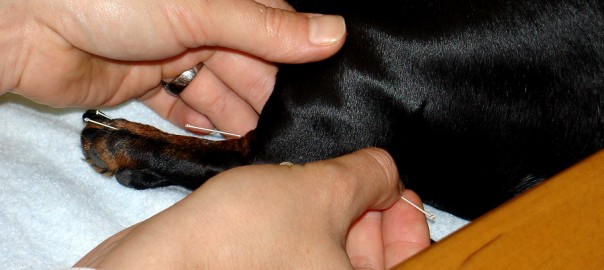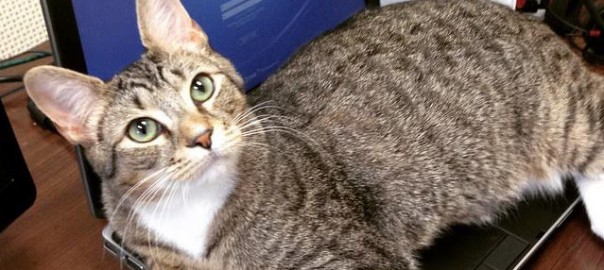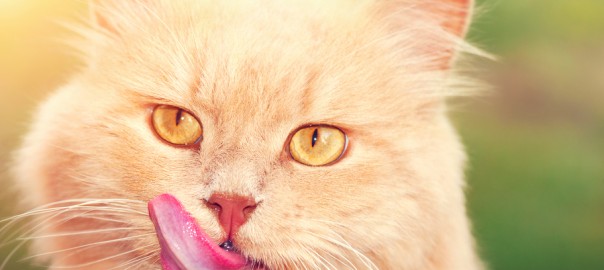Can pets benefit from acupuncture? You bet! While some patients may not respond to this traditional Chinese medicine, others suffering from pain or joint disease will improve with treatment.
Q: My dog has been getting acupuncture for arthritis, and it really seems to help. I’m curious how it works. What can you tell me about it? — via Facebook
A: Acupuncture is the insertion of fine, thin needles into the skin at strategic points on the body. In traditional Chinese medicine, these points were known as meridians, through which “chi,” or life force, flowed; in modern medicine, we know them as the vascular, nervous and muscular structures of the body.
Insertion of the needles at specific points is said to help activate healing by stimulating nerve endings and releasing certain substances that relieve pain, reduce inflammation and improve blood flow and oxygenation. According to Douglas Stramel, DVM, who spoke on acupuncture last December at the CVC conference in San Diego, acupuncture doesn’t treat specific symptoms, but instead stimulates the body to heal itself.
Most of us think of acupuncture as being used to relieve the pain of arthritis or other degenerative joint diseases. Other conditions that may benefit from acupuncture include gastrointestinal, respiratory or neurological problems. Veterinarians trained in the use of acupuncture have needled pets with upset stomachs, rhinitis, sinusitis, vestibular syndrome, hepatitis and allergies, among other things.
Depending on the problem, acupuncture may be the main treatment or a supportive treatment. For instance, acupuncture may serve to boost the effects of pain medication.
A first visit may take an hour or more, with follow-up treatments typically lasting 20 to 40 minutes. Acupuncture isn’t an instant fix and can take several sessions before results are seen. Response varies. Some pet patients see improvement, with the remainder having little or no response. As with any treatment, it’s essential to have an accurate diagnosis before using acupuncture.
Read more, including information on complementary veterinary medicine, in this week’s Pet Connection!




